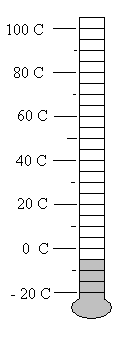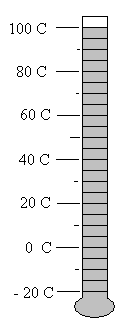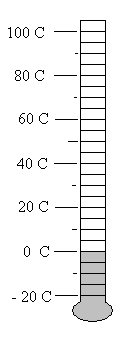Unit 6: Measurement
Topic A: Why Metric?
This unit will help you explore the system of metric measurement.
First, why metric?
- 98% of the countries in the world use the metric system.
- The International System of Units (SI) was established in 1960 as a result of a long series of international discussions. The SI sets the standards for the modern metric system. Because of SI, the use of the metric system provides exact measurements which have the same meaning worldwide.
- The metric system is patterned after the decimal number system – which means that the metric system focuses on 10. The calculations within the metric system are done with factors such as 10, 100, 1000. Many such calculations can be done by simply moving the decimal point.
- The metric system uses the same prefixes with all the units. Once you understand the prefixes and the units, your knowledge can be applied to all the metric measures used in science, technology, and everyday life.
- The SI provides certain rules of style. Some of these are listed for your reference over the next few sections. Read them over now and then look back at them often as you work with metric measurement.
The end of this unit will look at how metric measurement (metres, litres, grams, etc.) and imperial measurement (inches, feet, cups, ounces, pounds, etc) compare to each other.
A Review of Measurement Units
The Metre
The metre is the base unit used to measure length, height, and distance.
Here are some ways we use length, height, and distance measurement in our everyday lives:
- I drove 371 km from Smithers to Prince George.
- It is 1755 km from Dease Lake to Vancouver.
- The height of a newborn baby is 50 cm.
- An average adult male is about 1.8 m tall.
- A standard doorway is 2 m high.
- A brand new pencil is about 18 cm long.
- The base of a pencil is about 8 mm in length.
The Gram
The gram is the unit for measuring mass. (We use the words mass and weight in the same way.)
Here are some ways we use the measurement of mass in our everyday lives:
- 1 paper clip is 1 g.
- 1000 paper clips is 1 kg, or 1000 g.
- A medium-sized raisin is about 1 g.
- A block of butter (known as 1 pound in the imperial system) is 453.5 g.
- A bag of flour can weigh 10 kg.
- A baby might weigh about 3.5 kg when born.
- A semi-trailer transport truck weighs about 425 000 kg.
The Litre
Litres are the everyday unit that we use to measure volume or capacity.
Volume or capacity tells how much a container can hold. For example, the volume of the classroom would be represented by the amount of air in the room. The capacity of a container would be the amount of liquid it could hold.
We use litres to measure liquids and gases such as air.
Here are some ways we use volume measurement in our everyday lives:
- A big plastic milk jug is 4 L.
- A juice box that goes in a child’s lunch is 250 ml.
- There is 355 ml of pop in a regular pop can.
- Gas tanks can hold about 50 L of gasoline.
- The average person has about 3.8 L of blood in his or her body.
Celsius
Degrees Celsius is the common unit for measuring temperature. The symbol is °C.
The Celsius temperature scale was determined this way:
- The freezing point of water was set at 0°C
- The boiling point of water was set at 100°C
- The interval between freezing and boiling of water was divided into 100 equal parts known as degrees Celsius
(The name Celsius comes from the 18th century Swedish scientist, Anders Celsius.)
We say that temperatures colder than the freezing point of water are “below zero” or “below freezing” and we put a minus sign in front of the number.
- Five and a half degrees below freezing is written −5.5°C
- Forty degrees below zero is written −40°C

Exercise 1
What are the temperatures on the thermometers pictured on the page?
Answers to Exercise 1
- 20°C
- −5°C
- 100°C
- 0°C
| Temperature | Details |
|---|---|
| 37°C | normal |
| 38°C | slightly feverish |
| 39°C | very feverish |
| 40°C | dangerously high body temperature (equal to 104°F) |
| Temperature | Details |
|---|---|
| 40°C | too hot – sit down in the shade and relax! |
| 30°C | very warm summer’s day |
| 20°C | pleasant temperature for outdoor activities |
| 10°C | quite cool, you need a coat |
| 0°C | water is freezing |
| −10°C | brisk winter‘s day |
| −20°C | cold, watch for frostbite |
| −30°C | very cold |
| −40°C | extremely cold!!! |
Exercise 2
Keep track of the morning temperatures each day for a week. Put a thermometer outside your window and fill in the following chart. This is a great activity to do with your kids. The purpose of this activity is to get familiar with reading a thermometer, which is practicing a scientific measurement.
| Day of week | Sunday | Monday | Tuesday | Wednesday | Thursday | Friday | Saturday |
|---|---|---|---|---|---|---|---|
| Temperature in °C |
Rules of Style
Names of Units
The name of a unit starts with a lower case (small) letter except at the beginning of a sentence and except for degrees Celsius.
gram metre litre second
Use only one prefix at a time with a base unit. Do not use a hyphen (-) between the prefix and the base unit.
kilogram centimetre millilitre
Symbols
- With numerals, use the symbols for the metric units, not the full name.
- For example:
- 67 km not 67 kilometres
- 2.1 L not 2.1 litres
- For example:
- Write the full name of the unit and prefix if no numeral is used.
- For example: Milk is measured in litres.
- Do not use a period after the symbols. A period is only used if the symbol is at the end of a sentence.
- For example:
- Matt drove 457 km yesterday.
- Yesterday, Matt drove 457 km.
- For example:
- Do not use an “S” with the symbols to mean more than one unit.
- For example: Four kilograms is written 4 kg not 4 kgs
- Do not start a sentence with a symbol; write out the full name at the beginning of a sentence.
- For example: “Kilograms are quite heavy” not “Kg are quite heavy”.
- If a unit is squared, an exponent is used.
- For example: five square metres is written as 5 m2.
Numerals
- Leave a space between the last digit of the numeral and the symbol.
- For example:
- 45 km not 45km
- 2.5 L not 2.5L
- An exception is degrees Celsius, which is written as 27°C with no space.
- For example:
- Use decimal fractions with metric units, not common fractions.
- For example: 10.75 km not [latex]10\frac{3}{4}[/latex] km
- If a number is greater than ten, the preferred SI form is to use numerals, not the written-out number name.
- For example: 15 L not fifteen litres
- If you do write the number name instead of using numerals, write the full name of the metric unit also.
- For example: two kilometres, twenty-five metres
The numbers or quantities that are multiplied together to form a given product. 5 × 2 = 10, so 5 and 2 are factors of 10.
Any of the ten numerals (0 to 9) are digits. This term comes from our ten fingers which are called digits. The numerals came to be called "digits" from the practice of counting on the fingers!
e.g., ⅔, ³⁄₇ , ⁴⁹⁄₅₀





